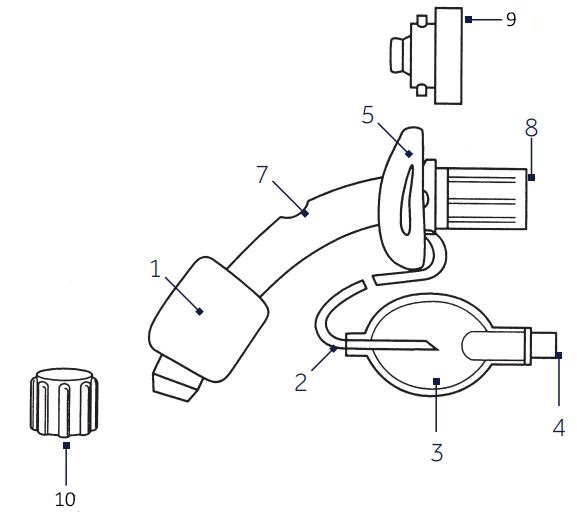-
Catheters (6,800+)
- Angiocatheters (50+)
- Closed System Catheters (300+)
- External Catheters (620+)
- Hydrophilic Catheters (140+)
- IV Catheters (1,200+)
- Non-Hydrophilic (20+)
- Plastic Catheters (200+)
- Rubber Catheters (700+)
- Silicone Catheters (770+)
- Ureteral Catheters (100+)
- Urethral Catheters (450+)
- Venous Catheters (240+)
-
Coronavirus (20,000+)
- Bacterial Filters (170+)
- Bleach (360+)
- Coveralls (500+)
- Disinfectant Wipes (350+)
- Face Shields (200+)
- Gloves (8,000+)
- Gowns (2,300+)
- Isopropyl Alcohol (170+)
- IV Therapy (2,000+)
- Masks (3,700+)
- Pulse Oximeters (250+)
- Sanitizer (670+)
- Scrubs (20,000+)
- Soap (1,500+)
- Stethoscopes (700+)
- Thermometers (950+)
- Custom Kits
- Dental (14,000+)
- Gloves (8,000+)
-
Gynecology & Urology (1,000+)
- Bed Side Drainage Bags (350+)
- Circumcision (150+)
- Cord Clamps and Clippers (60+)
- Disposable Vaginal Specula (60+)
- Enema Bags (30+)
- External Catheters (620+)
- Foley Catheters and Trays (1,200+)
- Identification (1100+)
- Leg Bag Accessories (10+)
- Leg Bags (280+)
- Reusable Vaginal Specula (900+)
- Specimen Collection (200+)
- Tubing & Connectors (17,000+)
- Urinals / Bed Pans (1,300+)
- Urine Collectors (60+)
- Urological Irrigation Products (10+)
- Vaginal Specula Illumination (2+)
- Systems (11,000+)
- Hygiene (1,000+)
- Incontinence (1,000+)
-
Infection Control (2,500+)
- Bacterial Filters (170+)
- Bleach (360+)
- Coveralls (500+)
- Disinfectant Wipes (350+)
- Face Shields (200+)
- Gloves (8,000+)
- Gowns (2,300+)
- Iodine (460+)
- Isopropyl Alcohol (170+)
- IV Therapy (2,000+)
- Masks (3,700+)
- Pulse Oximeters (250+)
- Sanitizer (670+)
- Soap (1,500+)
- Stethoscopes (700+)
- Thermometers (950+)
- Infusion All (2,000+)
- IV Bags - Empty (300+)
- IV Bags - Filled (100+)
- Masks (3,800+)
-
Medical Apparel (23,000+)
- Arm Sleeves (240+)
- Beard Covers (20+)
- Bouffant Caps (200+)
- Compression Socks (80+)
- Coveralls (500+)
- Disposables (100+)
- Isolation Gowns (360+)
- Lab Coats (2,200+)
- Lab Jackets (300+)
- Patient Gowns (300+)
- Procedural Gowns (230+)
- Scrubs (20,000+)
- Shoe Covers (270+)
- Surgeon Caps (40+)
- Surgical Gowns (70+)
- Surgical Hoods (20+)
- Surgical Masks (330+)
- Ostomy (400+)
-
PPE (20,000+)
- Bacterial Filters (170+)
- Bleach (360+)
- Coveralls (500+)
- Disinfectant Wipes (350+)
- Face Shields (200+)
- Gloves (8,000+)
- Gowns (2,300+)
- Isopropyl Alcohol (170+)
- IV Therapy (2,000+)
- Masks (3,700+)
- Pulse Oximeters (250+)
- Sanitizer (670+)
- Scrubs (23,000+)
- Soap (1,500+)
- Stethoscopes (700+)
- Thermometers (950+)
- Respiratory (500+)
- Sanitizer (600+)
- Surgical Supplies (14,000+)
- Sutures (7,500+)
- Syringes & Needles (14,000+)
-
Wound Care (5,000+)
- ABD Pads (100+)
- Adhesive Bandages (650+)
- Advanced Wound Care (400+)
- Applicators (6,700+)
- Burn care (240+)
- Dressings (7,500+)
- Elastic Bandages (1,600+)
- Gauze (3,300+)
- Ice / Heat Packs (280+)
- Medical Tape (820+)
- Non-Adhering Dressings (100+)
- Ointment & Solutions (450+)
- Self-Adherent Wraps (200+)
- Sponges (2,400+)
- Staple & Suture Removal (1,500+)
- Tegaderm (450+)
- Transparent Dressing (800+)
- Wound Care Prep (120+)
- Wound Cleansers (100+)
- Sales & Deals (100+)
- 3M (4,200+)
- Alaris Medical (600+)
- Amsino International (550+)
- Avanos Medical (40+)
- B Braun (1,500+)
- Baxter (750+)
- BD (2,800+)
- BSN Medical (2,000+)
- Cables & Sensors (3,200+)
- C.R. Bard (4,200+)
- Cardinal Health (6,800+)
- CareFusion (2,100+)
- ConMed (1,500+)
- Cook Medical (600+)
- Covidien (9,500+)
- DeRoyal (6,000+)
- Dukal (1,300+)
- Ethicon (4,100+)
- GE Healthcare (1,000+)
- Hartmann (600+)
- Hospira (530+)
- ICU Medical (1,700+)
- Masimo (170+)
- Medline (54,000+)
- Midmark (2,500+)
- Roche (300+)
- Smiths Medical (4,000+)
- Sunset Healthcare (450+)
- TrueCare Biomedix (20+)
- View All Brands (5,000+)

Covidien 6CFN - Shiley Cuffless Fenestrated Tube
6CFN Shiley Tracheostomy Tube Cuffless with Inner Cannula Fenestrated, 6.4 mm ID x 10.8 mm OD x 76 mm Length, Size 6
Tracheostomy Tube Cuffed with Inner Cannula, Fenestrated (FEN) allows for weaning of patient from tube by facilitating upper airway breathing.

For temporary use during cleaning or removal of reusable inner cannula with:
- Shiley tracheostomy tube cuffed with inner cannula (LPC)
- Shiley tracheostomy tube cuffed with inner cannula fenestrated (FEN)
- Shiley tracheostomy tube cuffless with inner cannula (CFS)
- Shiley tracheostomy tube cuffless with inner cannula fenestrated (CFN)
| SIZE | PRODUCT CODE | I.D. | O.D. | LENGTH |
| 6 | 6FEN | 6.4 mm | 10.8 mm | 76 mm |
An economical alternative to disposable tubes
- An integral 15 mm twist-lock connector
- Reusable inner cannula; may be cleaned and reused up to 29 days on a single patient
- Swivel flange that moves with the patient
- High-volume, low-pressure cuff that provides a gentle and effective seal
- Latex free
- Packaged individually, sterile.
Specifications

1. Cuff
The "balloon" on the end of the trach tube. When inflated, it forms a seal against the wall of your windpipe. This stops the air flow through your mouth and nose so that you breathe through the trach tube.
2. Inflation line
Thin plastic tubing that carries air to and from the cuff.
3. Pilot balloon
Small plastic balloon-like component on the end of the inflation line. Indicates if air is in the cuff.
4. Luer valve
Where the syringe is connected to inflate or deflate the cuff.
5. Soft swivel neck flange
Contains product designation and size information. Twill ties or Shiley tracheostomy tube holders attach through the holes on either side securing the tube to your neck. Soft swivel design helps to position the tube properly and comfortably.
7. Fenestration
A hole on the curved part of the trach tube or inner cannula. When a fenestrated inner cannula is used or the non-fenestrated inner cannula is removed, it allows air to flow through the vocal cords, mouth and nose so you can speak.
8. 15 mm connector
Part of the inner cannula that sticks out at the neck. An artificial nose, ventilator tubing, manual resuscitation bag or Shiley Phonate speaking valve may be connected to this.
9. Decannulation plug (DCP)
For use with FEN and CFN. Attaches to the trach tube opening when the inner cannula has been removed and the cuff has been deflated. Directs air through fenestration to your mouth and nose.
10. CAP
Fits over the green 15 mm connector on the fenestrated inner cannula of an FEN or CFN when the cuff has been deflated. Directs air through fenestration to your mouth and nose so you can speak.
Read before starting inner cannula care
Warning: The inner cannula with low profile connector is too short to attach to respiratory equipment such as ventilator tubing, an artificial nose, a manual resuscitation bag or a Shiley Phonate speaking valve. Use the cannula with 15 mm connector for this purpose.
Caution: The FEN and CFN are supplied with both a fenestrated and nonfenestrated inner cannula. Do not use the fenestrated inner cannula (green-colored connector) during mechanical ventilation.
Warning: Shiley decannulation plugs (DCP and DDCP) are designed for Shiley fenestrated tubes only. They are not interchangeable with other manufacturers products.
What you will need

- Gloves
- Hydrogen peroxide
- Hydrogen peroxide and sterile water (mixed in equal parts)
- Small non-abrasive brush or pipe cleaners
- Small wash basin
- Spare inner cannula (SIC) if using reusable inner cannula tube and you are using a ventilator
- Sterile 4" x 4" gauze
Reusable inner cannula care
(CFN, CFS, FEN, LGT, LPC)
- Wash your hands.
- Hold the neck flange steady with one hand.
- With the other hand, grasp the twist-lock inner cannula connector and carefully unlock it using a counterclockwise motion.
- Pull the inner cannula out of the tube, using a downward motion.
- If you need to use a ventilator during this cleaning procedure, insert a clean spare inner cannula (SIC), which is designed for short-term use and has a red 15 mm connector.
The SIC is sold separately. Verify that the red twist-lock connector engages securely after each use. If parts become worn or loose, immediately report this to your physician for prompt replacement of the tracheostomy tube.
The SIC is shorter than the original fitted inner cannula and was designed for temporary use. Ten (10) minutes is suggested as the time limit for continual usage. Secretions may build up on the inside of the outer cannula if used longer than the recommended time.

- Place the soiled inner cannula in a small wash basin containing sterile normal saline, distilled water, a solution of water and a mild detergent or a solution of half hydrogen peroxide and half water. Use a small, non-abrasive brush or pipe cleaner to gently remove mucus.
- After cleaning, rinse the inner cannula thoroughly with sterile normal saline or distilled water to remove all hydrogen peroxide.
- Air dry the inner cannula by gently shaking it.
- Hold the neck flange steady with one hand.
- Remove the spare inner cannula, if you used one.
- Reinsert the clean twist-lock inner cannula into the tube and secure it by gently twisting it clockwise until the blue dot on the inner cannula lines up with the blue dot on the tube.
- Clean the spare inner cannula, air dry and store in a safe place.


Covidien #6CFN, Shiley Cuffless Fenestrated Tube
$65.96 EACH

Covidien #8CFS, Shiley Cuffless Tracheostomy Tube
Call for Pricing

Shiley #6CFN, TRACH TUBE CUFFLESS, BX
$65.96 EACH

Covidien #6CFN, TUBE, TRACH, UNCUFF, FENES, CANNULA, SZ 6.0, EACH
Call for Pricing

